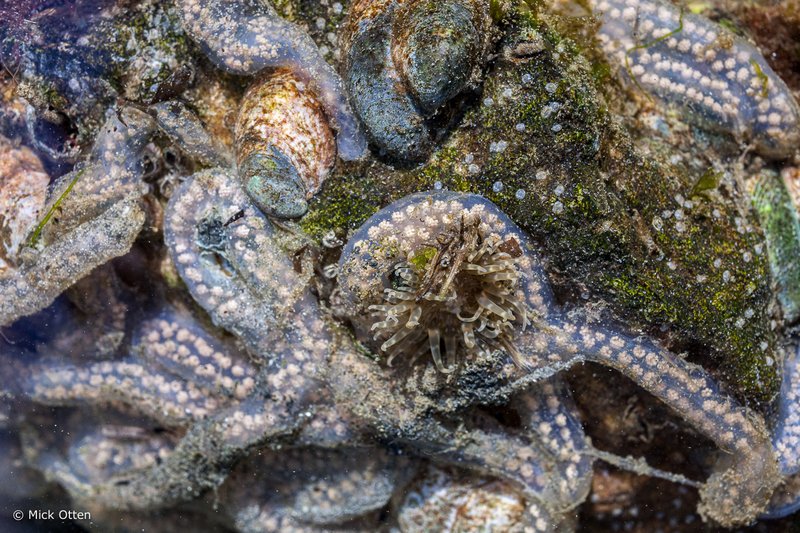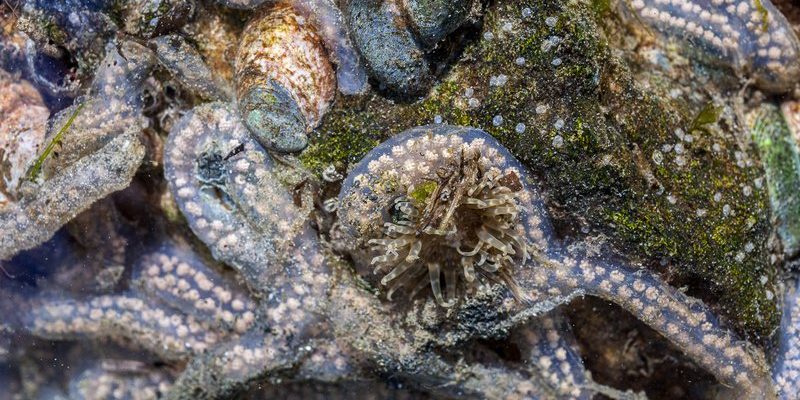
The bootlace worm, known scientifically as *Lineus longissimus*, is one of the longest animals on Earth. Their lifespan can vary significantly based on their environment, much like how the lifespan of a dog can differ based on breed and care. Let’s dive into the lifespan of these remarkable worms and explore what factors affect their time in the wild.
Understanding the Bootlace Worm
Before we get into the nitty-gritty about their lifespan, let’s talk a little more about what makes bootlace worms so intriguing. Imagine a creature that can grow up to 55 meters long—that’s around 180 feet! They live in marine environments, often lying hidden in mud or sand on the ocean floor. Their elongated bodies are usually thin and ribbon-like, making them look almost like giant strands of spaghetti.
Bootlace worms are part of the Nemertea phylum, which makes them cousins to other interesting creatures such as flatworms. They have some unique traits, like the ability to regenerate lost body parts and a fascinating method of hunting. They can extend their proboscis—sort of like a long tongue—to capture prey, which mainly consists of small marine animals.
Factors Affecting Bootlace Worm Lifespan
So, how long do bootlace worms actually live? Honestly, that can be a tricky question. Like many living organisms, their lifespan depends on several factors, including environmental conditions, predation, and food availability. In general, bootlace worms can live for several years if conditions are just right.
- Environment: Bootlace worms thrive in environments with ample food sources and minimal disturbance. For instance, if they’re in a healthy marine ecosystem, they tend to live longer.
- Predation: These worms have a few natural predators like fish and seabirds. If they face constant threats, their lifespan can be dramatically reduced.
- Food Availability: When there’s plenty of food—like small crustaceans or other worms—they can live longer and healthier. A lack of food forces them to struggle, which can shorten their life.
So, while we might not have a definitive number, understanding these factors gives us a clearer picture of their life expectancy.
Life Cycle of Bootlace Worms
The life cycle of bootlace worms is another essential part of understanding their lifespan. These fascinating creatures start life as larvae. After hatching, they drift through the water column, feeding and growing. During this time, they might encounter various challenges.
From Larvae to Adult
Once they settle on the ocean floor, they begin the transformation into adults. In this stage, they get longer and more complex in structure. Here’s an interesting tidbit: bootlace worms can grow rapidly during this phase, sometimes gaining several meters in just a few months.
Interestingly, their growth rate can be influenced by water temperature and food availability. Warmer waters usually promote faster growth. As they mature, they begin reproducing, which plays a vital role in the continuation of their species.
Natural Habitats of Bootlace Worms
Bootlace worms are typically found in a variety of marine habitats. **They prefer sandy or muddy substrates**, often burrowing into the sediment to hide from predators. This behavior not only provides safety but also places them in areas rich in food.
Some common habitats include:
- Coastal Waters: You can commonly find them along coastlines, where they thrive in shallow waters.
- Deep-Sea Environments: They also exist in deeper waters, often in areas that are less disturbed by human activity.
- Estuaries: These are rich feeding grounds where freshwater meets saltwater, allowing for a diverse food supply.
By living in these environments, bootlace worms can find the nutrients they need, which helps them live longer.
The Role of Environmental Changes
As with many marine species, bootlace worms face challenges due to environmental changes. Climate change, pollution, and habitat destruction all pose threats to their populations.
You might be wondering how this impacts their lifespan. Well, here’s the thing: **warmer ocean temperatures** and **increased pollution** can lead to less food availability and more predators. This means that even if they have the potential to live for several years, external factors can shorten their lives.
Impact of Pollution
Pollution can significantly affect their habitats. For example, when chemicals or waste enter the ocean, it can harm the delicate balance of the ecosystem. Bootlace worms rely on a healthy environment, and pollution can lead to reduced food sources or increased toxins in their bodies.
Conservation Efforts for Bootlace Worms
Protecting bootlace worms involves broader conservation efforts aimed at maintaining healthy marine ecosystems. By ensuring cleaner oceans and safeguarding habitats, we can help these fascinating creatures thrive.
Some practical conservation methods include:
- Marine Protected Areas: Establishing areas where human activities are limited can help support bootlace worm populations.
- Pollution Control: Reducing runoff and waste entering the oceans is crucial for maintaining clean habitats.
- Public Awareness: Educating communities about the importance of marine life can foster respect and care for these creatures.
Through concerted efforts, we can make sure that bootlace worms and many other marine species have the chance to live and flourish in their natural habitats.
The lifespan of bootlace worms can be a bit of a mystery, shaped by factors like environment, food availability, and natural threats. While they might not make headlines like bigger animals, their existence contributes to the health of marine ecosystems. Understanding and protecting them is vital not just for the worms but for the overall balance of our oceans. By being mindful of our impact on these habitats, we can ensure future generations can appreciate the wonders of creatures like the bootlace worm. After all, every part of our ecosystem, no matter how small, plays a significant role in the big picture.

